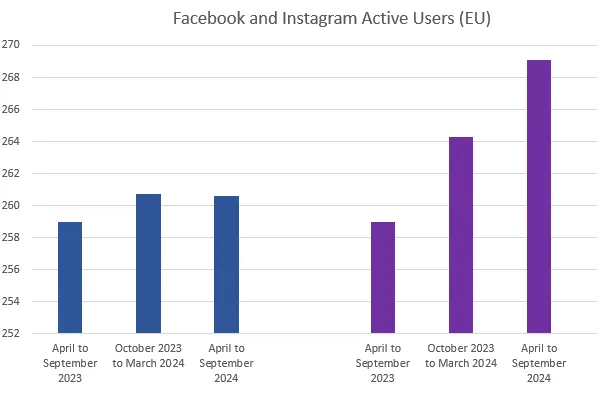Imagine a television channel that programs itself exclusively for you, learning your sense of humor, your political leanings, your niche hobbies, and your secret cravings in a matter of hours. This is not a futuristic fantasy; it’s the daily reality for over 150 million Americans on TikTok. At the heart of this experience is the “For You Page” (FYP)—a seemingly endless, hypnotic stream of content powered by one of the most sophisticated and enigmatic algorithms in the world.
But this algorithm doesn’t operate in a vacuum. It is constantly being trained, tweaked, and turbocharged by its most influential user base: American teenagers. Gen Z isn’t just using TikTok; they are its cultural architects, its trendsetters, and its most potent feedback loop. They have an intuitive understanding of the platform’s unwritten rules, shaping everything from dance crazes and slang to social movements and consumer behavior.
This article will unpack the intricate mechanics of TikTok’s algorithm and demonstrate, with clarity and authority, how U.S. teens have become the indispensable force driving the platform’s relentless innovation. We will move beyond the surface-level “viral video” explanation to explore the symbiotic relationship between code and culture, and what it means for the future of entertainment, marketing, and society at large.
Section 1: Deconstructing the Algorithm – It’s More Than Just Likes
While TikTok guards its algorithm like a state secret, through company publications, developer blogs, and reverse-engineering by experts, we have a robust understanding of its core components. Contrary to popular belief, it’s not a simple tally of likes. The system is a complex, multi-layered recommendation engine that evaluates a wide array of signals.
The Core Ranking Signals
TikTok’s algorithm primarily decides what to show you based on three categories of information:
- User Interactions: This is the most direct feedback. The algorithm pays close attention to:
- Likes, Comments, and Shares: Explicit acts of engagement.
- Video Completion Rates: Did you watch the whole video? This is a massively important signal. Rewatching a video is an even stronger positive indicator.
- Accounts You Follow: The content from creators you follow is prioritized.
- Content You Create: The captions, sounds, and hashtags you use in your own videos tell the algorithm about your interests.
- Direct Messages: Videos you share via DM signal high-value content.
- Video Information: This is the “what” of the content itself.
- Captions: Keywords and phrases in the caption are analyzed.
- Sounds & Music: The single most powerful trend vehicle on the platform. Using a specific song can instantly connect your video to a viral trend.
- Hashtags: While less dominant than in the Instagram era, they still help categorize content (e.g., #BookTok, #CleanTok, #GymTok).
- Device & Account Settings: These are considered but are given lower weight, as they are not strong indicators of user preference. This includes:
- Language Preference
- Country Setting
- Device Type
- Category of Interest (if you selected one as a new user)
The “For You Page” – A Unique Ecosystem of Discovery
The genius of the FYP is its commitment to distribution diversity. Unlike other platforms that primarily show you content from people you follow, TikTok’s FYP is designed for discovery. Its stated goal is to “diversify the content a user sees in their FYP, introducing them to new categories, creators, and cultures.”
The system actively tests new content with small, relevant audiences. If a video achieves high engagement and completion rates with that initial group, it’s pushed to a larger, slightly broader audience. This snowball effect is how a complete unknown can amass millions of views overnight. This meritocratic (though not perfectly so) system means that content quality, as defined by its ability to captivate, is the primary currency—not follower count.
Section 2: The U.S. Teen – The Algorithm’s Perfect User
Why have American teenagers developed such a synergistic relationship with this algorithm? The answer lies in a confluence of behavioral, psychological, and cultural factors that make them the ideal engine for the platform.
1. Digital Nativism and Visual Literacy
American Gen Z are true digital natives. They have never known a world without high-speed internet, smartphones, and on-demand content. This has endowed them with a unique form of visual literacy. They process information faster in video format, understand nuanced cultural cues in edits and sounds, and communicate more effectively through multimedia than any generation before them. They don’t need to “learn” TikTok; they intuitively speak its language.
2. The Craving for Authenticity and Relatability
In a marked departure from the highly curated, polished aesthetic of Instagram that defined the Millennial era, Gen Z values raw authenticity. The low-production-value, “shot-on-an-iPhone” feel of many TikTok videos is a feature, not a bug. Teens are drawn to content that feels genuine, unfiltered, and relatable. This could be a teen venting about school stress in their car, a “get ready with me” that shows acne and bad hair days, or a comedic skit about the awkwardness of social interactions. This authenticity generates trust and connection, which the algorithm rewards with engagement.
3. The Power of Niche Community Building
U.S. teens use TikTok to find their “people.” The platform’s powerful discovery engine allows them to connect with micro-communities built around hyper-specific interests. Whether it’s #BookTok revolutionizing the publishing industry by championing fantasy novels, #WitchTok creating a space for spiritual exploration, or #GuitarTok fostering a new generation of musicians, these niches provide a sense of belonging. Teens aren’t just passive consumers; they are active participants, creating inside jokes, slang, and trends that reinforce their community identity.
4. The Participatory Culture of Memes and Trends
TikTok is built on a foundation of participatory culture. A trend isn’t just something you watch; it’s something you do. A viral sound, dance, or format is an open invitation for a “duet,” a “stitch,” or a direct replication. U.S. teens are masters of this remix culture. They deconstruct a trend, add their own unique spin, and republish it, thus fueling the algorithm with a constant stream of fresh, interconnected content. This collaborative creation is the lifeblood of the platform.
Section 3: Case Studies – How Teens and the Algorithm Create Cultural Phenomena
Let’s move from theory to practice. Here are two detailed case studies illustrating this powerful feedback loop in action.
Case Study 1: The Sea Shanty Revival (“Wellerman”)
In early 2021, a cultural phenomenon swept TikTok that no marketer or music executive could have ever predicted: the viral resurgence of 19th-century sea shanties.
- The Spark: It started with a single video from a Scottish postman, Nathan Evans, singing a capella version of the shanty “Wellerman.”
- The Algorithm’s Role: The video, with its novel and earnest performance, achieved high completion rates. The algorithm identified its potential and pushed it to a wider audience, including users interested in folk music, history, and unique vocal harmonies.
- The Teen-Led Remix: This is where U.S. teens took over. They didn’t just watch; they participated. A user named @acountrymale created a bass-track accompaniment and duetted with Nathan’s video. Others added drums, orchestral layers, and harmonies through a cascade of duets and stitches. The trend evolved from a solo performance into a massive, global, digital choir.
- The Result: The #SeaShanty hashtag garnered billions of views. Nathan Evans secured a record deal, and “Wellerman” charted in the top 10 in the UK and other countries. This was a pure algorithm-and-community-driven hit, demonstrating how teens can take an obscure piece of culture and elevate it to mainstream success through collaborative creation.
Case Study 2: The “De-influencing” Movement
By 2023, a backlash against rampant consumerism and over-hyped products was brewing, particularly among environmentally and financially conscious Gen Z users. This culminated in the “de-influencing” trend.
- The Spark: Fed up with influencers pushing products for commission, teens began creating videos with the hashtag #deinfluencing.
- The Core Message: Instead of “buy this,” the message was “don’t buy this.” Creators would call out overpriced, poorly performing, or wasteful viral products, often suggesting more affordable or sustainable alternatives.
- The Algorithm’s Role: The trend tapped into a powerful sentiment of authenticity and skepticism, leading to high engagement through comments and shares. The algorithm recognized this as a potent trend and amplified it across the FYP of millions of users, even those who typically followed beauty and lifestyle influencers.
- The Impact: The movement forced a major shift in the influencer marketing industry. Brands had to reconsider their strategies, leaning into more genuine, review-based partnerships. It demonstrated that teen-driven trends on TikTok are not just about driving sales; they can be powerful forces for ethical consumerism and holding influencer culture accountable.
Section 4: The Ripple Effect – How Teen-Driven TikTok is Reshaping America
The influence of this teen-algorithm symbiosis extends far beyond the phone screen, creating ripple effects across the entire American landscape.
- The Music Industry: TikTok is now the most powerful A&R (Artists and Repertoire) tool in the world. A song going viral on the platform can guarantee chart success, as seen with artists like Lil Nas X, Doja Cat, and Olivia Rodrigo. Record labels now actively market songs to TikTok creators, hoping they will adopt them for their videos.
- Television and Film: #BookTok directly led to a surge in book sales for specific authors, resulting in publishing deals and TV adaptations (e.g., “The Love Hypothesis,” “The Seven Husbands of Evelyn Hugo”). Similarly, classic shows like “Suits” found a massive new audience years after their finale due to persistent mentions and clips on TikTok.
- Marketing and Advertising: The old playbook of interruptive ads is dead. Brands must now create content that fits natively into the FYP—content that is entertaining, authentic, and offers value before it offers a product. The “TikTok Made Me Buy It” phenomenon is a testament to the platform’s direct purchasing influence.
- Social and Political Discourse: TikTok has become a primary news source for nearly a third of U.S. adults under 30. Teen activists use the platform to organize and raise awareness on issues from climate change to gun control, bypassing traditional media gatekeepers.
Section 5: The Double-Edged Sword – Ethical Considerations and Challenges
The power of TikTok’s algorithm, when combined with a vulnerable teenage user base, is not without significant risks. A responsible analysis must address these challenges.
- Mental Health and the Comparison Trap: The endless stream of curated lives, bodies, and successes can exacerbate anxiety, depression, and body image issues among teens. While the platform can be a source of community support, it can also be a source of significant social pressure.
- The Spread of Misinformation: The algorithm’s goal is engagement, not truth. Misinformation, presented in a compelling, short-form video format, can spread with terrifying speed and is often difficult to debunk.
- Data Privacy and National Security Concerns: As a company owned by the Chinese firm ByteDance, TikTok has been at the center of intense scrutiny from the U.S. government regarding the potential for user data to be accessed by the Chinese Communist Party. This has led to ongoing congressional hearings and calls for bans or divestment.
- The Creation of “Echo Chambers”: The hyper-personalized FYP can trap users in ideological bubbles, reinforcing their existing beliefs and limiting exposure to diverse perspectives.
Conclusion: The Unwritten Future
TikTok’s algorithm is a technological marvel, but its true power is unlocked by the creativity, authenticity, and participatory spirit of its most dedicated users: American teenagers. They are the engine of the “next big thing,” the cultural barometer for what resonates, and the architects of a new digital paradigm.
Understanding this dynamic is crucial for anyone looking to grasp modern American culture, from parents and educators to marketers and policymakers. The relationship between the algorithm and the user is a continuous feedback loop—a dance between human creativity and machine learning. As both continue to evolve, one thing is certain: the FYP will remain the most vibrant, chaotic, and influential cultural incubator of our time, and U.S. teens will be right at the center of it, driving it forward.
Read more: Tipping, Taxes, and Transit: The Unwritten Rules Every Visitor to the USA Should Know
Frequently Asked Questions (FAQ)
Q1: Can I “reset” or “trick” my TikTok algorithm?
A: You can’t fully reset it, but you can actively retrain it. Meticulously use the “Not Interested” feature on videos you don’t like. Intentionally seek out and engage with (like, follow, comment on) content from creators and niches you want to see more of. The algorithm is responsive and will adapt within a day or two of consistent new signals.
Q2: My teen is always on TikTok. Should I be concerned?
A: Balance is key. Have an open conversation with them about their experience. What do they like about it? What communities are they part of? Educate them (and yourself) about digital literacy, privacy settings, and how to identify misinformation. Encourage offline activities and set reasonable time limits, focusing on guidance rather than pure restriction.
Q3: Why do some videos with low likes and comments go viral?
A: Because the algorithm prioritizes completion rate above almost all else. A video that 95% of viewers watch to the end is sending a incredibly strong signal of quality, even if only a small percentage take the extra step to like or comment. Shares and rewatches are also heavily weighted.
Q4: Is TikTok really a national security threat?
A: This is a complex and actively debated issue. The core concern from U.S. officials is that ByteDance, as a Chinese company, could be compelled under China’s national security laws to hand over data on American users or to manipulate the content its users see. TikTok denies these allegations and has undertaken “Project Texas” to migrate U.S. user data to servers owned by the American tech company Oracle. The situation is ongoing, and it’s important to stay informed through reputable news sources.
Q5: As a small business, how can I leverage TikTok without being cringe?
A: The key is to be a creator first and a seller second. Don’t just make ads. Show your process, educate your audience about your industry, highlight customer stories, and participate in relevant trends in an authentic way. Use your unique knowledge (Experience) to provide value. People come to TikTok to be entertained and informed, not just to be sold to. Be genuine, and the right audience will find you.




